
Creating space for all ages to come together, socialise, walk beautiful gardens, exchange invaluable information, ideas and have space to learn with likeminded people. That’s exactly what we do when we get together for a Mareeba Seed Savers and Gardening Group meeting.
Seed Savers Up North, the first seed savers group in our local area, was coordinated by Annie Jenkins who started the group in 1995. Their meetings were usually held on the Southern Tablelands in Tarzali. The group folded in 2010 after 15 very successful years.
The Mareeba Seed Savers and Garden Group was founded in 2009 by Peder and myself. We are a part of the Australia wide Seed Savings Network which was founded by Michel and Jude Fanton based in Byron Bay NSW in 1986.
When you first start a garden no matter how small the question is where to do what and when is best. We share knowledge and ideas such as planning and planting, recipes and talk about what is happening in our gardens. We learn from each other. Maybe some of us have experience with invasion of grasshoppers. Some can share observations on how fun it is to watch Kookaburra train their young ones to fly and get food. There is always something to discuss and the amount of knowledge contained within the group is incredible and outstanding. Some of us are new to seed saving and gardening, others have done it for a lifetime. There is never a quiet moment! The group has brought so much diversity into many members and family/friends gardens. We have supported many a new gardener and they have all appreciate the help. I personally would never have tried all the different seeds I have if it wasn’t for this group. Also coming from Scandinavia knowing absolutely nothing about tropical climate and absolutely nothing about gardening in the tropics the group has given me so much encouragement, support and information for which I am very grateful. Now and again when I look back to 2005 when I first got involved with The Seed Savers Network and think of all these meetings and information shared I get a bit overwhelmed. It is a wonderful journey.
Our group is a grass root group with no president, treasurer or secretary. We don’t have an Annual General meeting and no committee. We all take part in running the meetings which we have every second month (on the second Sunday as a rule of thumb). Our membership is $ 10 for a single person and $15 for a family. Financial members can take home any seeds for free. Non-financial members give a donation. When you initially become a financial member of Mareeba Seed Savers and Garden Group if you so wish, you are given The Seed Savers Handbook written by Michel and Jude Fanton and a CD to go with it (as long as the group financially can afford it). People interested can place themselves on a mail out list and will receive a next meeting notification. We also print out notification fliers and they are available at Essence Wholefood and at the library in Mareeba. Mareeba Seed Savers and Garden Group is on Facebook as well and we welcome you to join this network.
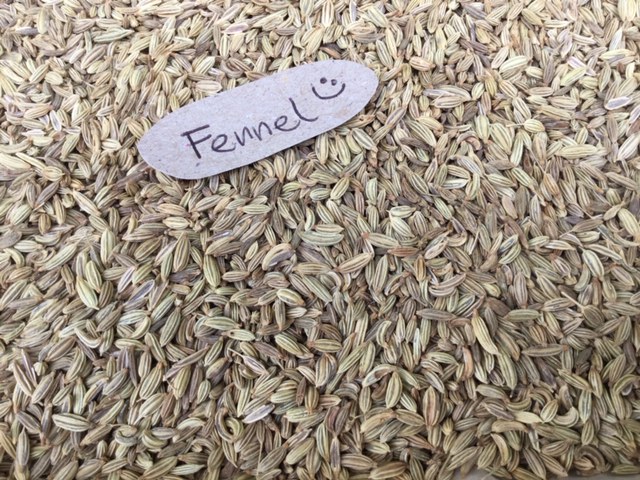
We meet in private gardens and it is always great to see what people grow and how they have laid out their garden. Some gardens are very structured other gardens grow wild. There is an idea behind it all. When you look in your own garden you might not have a lot of biodiversity. Maybe you grow 10 of your most favourite crops. Joining a seed savers group with say 40 members you will soon have 10×40 more varieties. It is awesome. The greater biodiversity we have in our gardens the better a chance for the crop to survive a disease or pest.
The meeting starts at 10 am. People bring organically grown open pollinated seeds that they have saved from their garden. Open pollinated seeds meaning that the pollination process that created the seeds was open to nature like bees and wind and not controlled by humans. The seeds must be dry so we can clean and pack them straight away. We do not pack damp seeds as they will attract mildew and bugs. We have an accession book and all seeds are registered and given a name and a number for easy identification. The grower fills out a so called plant passport.
Why do we have a plant passport?
The reason for having a plant passport is to share information about who grew the plant so you can get in contact with the grower if needed. The passport holds information about what the plant is good for e.g. edible, how well it grows, where it grew and other interesting points like how to utilise the particular plant.
What seeds do we save?
Our seeds are mainly greens, vegetables, edible flowers, herbs, flowers to attract good bugs and flowers to repel nasty unwanted bugs. We do not store fruit tree seeds as they need to go in the ground straight away as their embryo will be damaged if dried. We don’t store bulbs such as ginger, turmeric, garlic and potatoes. And no coconuts for storage please!
Why do we have a seed bank?
Our Seed Bank is a bank on the move with seeds flowing in and seeds flowing out. It is important to have a seed bank from which we can access seeds, take them home, grow them out and return the following generation. The seed bank is a backup in case we lose our seeds in the garden for some reason like a locust plague, floods or bushfire. Also we send seeds to other groups of people who may be in need for new seeds. Seed saving is a gift and it is important to move seeds to where they are needed.

Having a seed bank is a great way to share seeds and we have varieties that you can’t buy in our local seed shop. Some of our seeds are 30 – 70 years old grown continuously for generations by certain families. Our seeds have adapted to our climate and soil. We can also swap seed with other seed savers network in Australia for example groups in NSW, VIC or SA. There is no limit to the seed exchange.
Having a seed bank you can protect the seeds we grow and make sure there is healthy nutritious food for the future generation. All over the world we are losing seeds by the minutes. Since the turn of last century we have lost 90% of our crop diversity. This is scary! When we lose seeds we lose our traditional way of eating. The seeds disappear for various reasons.
Tarzali, Millaa- Millaa and Malanda are areas with rain then drizzle then more rain and not so much sunshine. Sometimes seeds can’t be saved under such conditions they just sit on the plant and get mouldy or rot away. Then Mareeba Seed Savers and Garden Group get a phone call: “we can’t save our seeds, it is too wet”. No worries Mareeba says. We have 300 sunny days a year we will send over some seeds. What a great way of supporting each other.
We have donated seeds to areas hit by natural disaster such as Vanuatu when it was hit by cyclone Pam in 2015. After cyclone Debbie 2017 one of our very devoted members left for Airlie Beach. We gave her plenty of seeds we thought would grow there to share around and we also donated The Seed Savers Handbook and CD’s for her to start a new group of seed savers. When Townsville flooded in 2019 we send off a load of seeds. We also donate seeds to newly started seed savers groups and community gardens in our local area. We donate The Seed Savers Handbooks to local schools. To put it short we build communities, resilience and biodiversity.
At our meetings we also have a share table. To this table we bring, we share, and we swap anything from seeds, fruit, plants, tubers, books, tools and any garden material you could ever think of.

We usually pack 10 packets of seeds for each variety coming in. Seeds are packed in small plastic bags with a zip lock and placed in a paper envelope. We write the name and number of the seed on the envelope together with the time of harvest. If there is a surplus of seeds these are kept in a separate bag with the packed seeds envelopes and the Plant passport in a bigger plastic bag with a sip lock. The seeds are kept in our Seed Bank Box and are available at every Mareeba Seed Savers and Garden Group meeting. We have managed to keep the stored seeds to a minimum in a plastic box which is stored at Essence Wholefoods in Mareeba in a cool, dark and dry environment.
If for some reason we have some seeds in the bank that we think are too old someone usually volunteer to take them home and grow them out and if the seeds are still viable and performing well the next generation of seeds are then brought back to the bank. That way old seeds are replace with new seeds. We have a list of seeds available and this list is updated after each meeting.
A little while ago Seed Savers Up North and Mareeba Seed Savers and Garden group had 469 varieties of seeds through the bank. As mentioned above we usually pack 10 packets of seeds for each entry so roughly we have packed 4,690 packets over the last 12 years which have gone back into our community. Over the years we have had 43 varieties of beans, 23 varieties of lettuce and 9 varieties of tomatoes. Currently we have 147 varieties of seeds in our bank and 20 of these are beans. Just to mention a few.
When I first joined Seed Savers Up North we did viability testing of the different seeds. This is how to do it. Plant so many seeds count how many germinated work out % e.g. 10 seeds planted 10 seeds germinated = 100% germination. 10 seeds planted 5 germinated = 50% germination. Sometimes I do my own personal viability test in egg shells. It is a fun way of doing it and I have my egg shells sitting in an egg carton on my writing desk ready to see if and when a seed germinate.
Why we don’t keep hybrid seeds:
Hybrid plants are artificially cross-pollinated, and bred to favour desirable characteristics, like higher yield (in monocultures) and more uniform size to accommodate mechanized harvesting. However, the seed produced by the second generation (F2) of the hybrid does not reliably produce a true copy of that hybrid (it segregates) and often loses much of its yield potential.
We pack seeds until 11.50am then it is time for any announcements. 12 noon and a deserved lunch break we take out our plate of food to share and enjoy a smorgasbord of fantastic food. Remember we bring our own cutlery, plates, cups, chair and hat.
At 1.00 pm we have a guest speaker and the subject is always something interesting for a gardener and seed saver. Over the years we have covered subjects such as: Creating and growing an abundant garden, Food Forest, How to make bio fertilizer from Native Microbes, From scratch to veggie garden, Interaction between the plants and the soil, Bee-ing with bees, Re-vegetation and organic food garden, An introduction to using higher vibrations, Compost making, Attracting more birds to your garden and the benefits of it, Weeds, Fire management, How to be a successful seed saver and gardener, Grafting and Propagating, Growing herbs in the tropics, Native bees and butterflies in the garden, Medicinal herbs, Cooking with Herbs and spices and A weed by any other name.
After question time with the guest speaker we have a short break and then we do a garden walk where different interesting subjects are highlighted and explained and this is another great time to ask more questions and exchange more knowledge.
We return home bubbling with new energy and an urgent need to do some more growing. To be a member and take part in the activities is a very life-affirming feeling that I would not be without. You don’t need to have a farm or big garden to be a part of seed saving. You can quite easily grow things in pots out door or in the windowsill. Seed saving and growing is for everybody on this planet who would like to secure healthy food and a healthy lifestyle for generations to come.
There are other seed savers groups in our local area. Mt. Molloy has a Seed Exchange every 1st Saturday of the month coinciding with Mt. Molloy market. Sometimes they hold a meeting. Please contact the group on [email protected].
Kuranda Sprout Seed Savers meet every second month and there is also a group in Cairns. If you would like to be on their mail out list please email [email protected].
Wow, there are plenty of opportunities to get involved. Each group runs differently and we are very proud of our diversity. Once you are a financial member (if you so wish) of one of the local Seed Savers group you are a member of them all. It feels really good to be a seed saver and it makes me sleep well at night. Another great way of getting involved with gardening and seed saving is to join your local community garden.
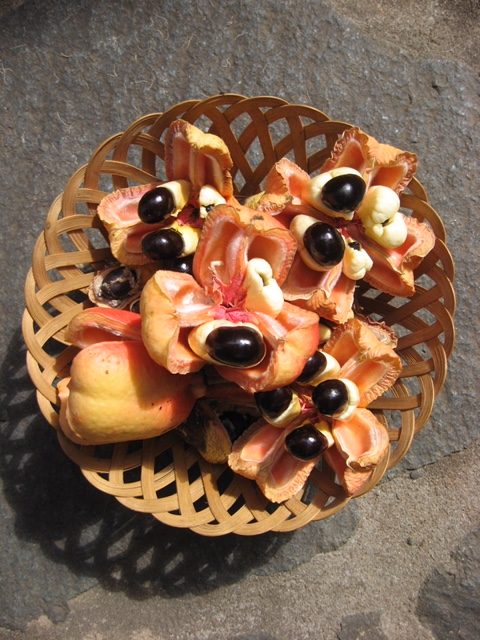

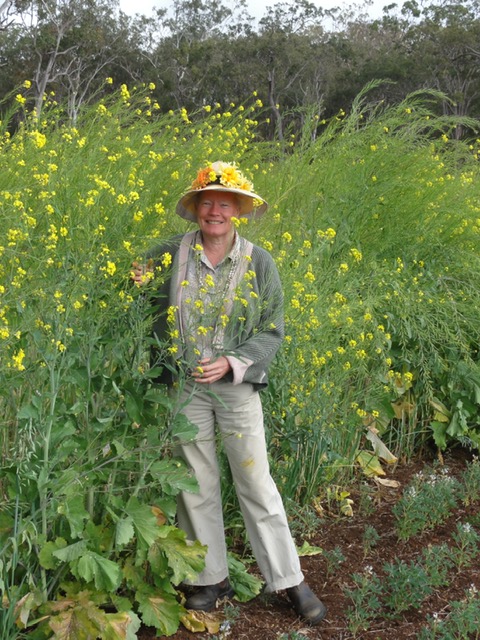
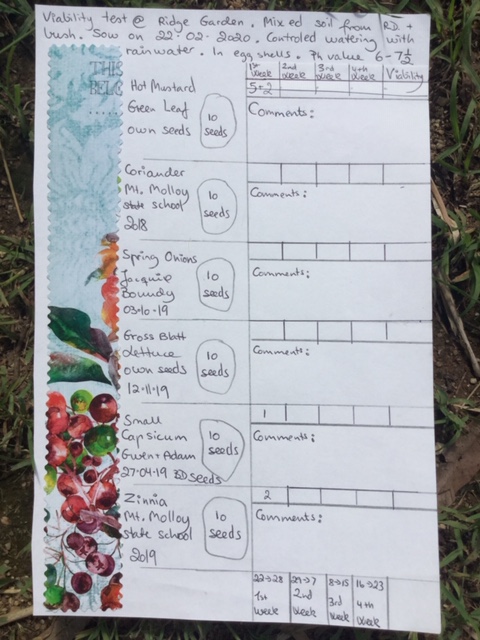
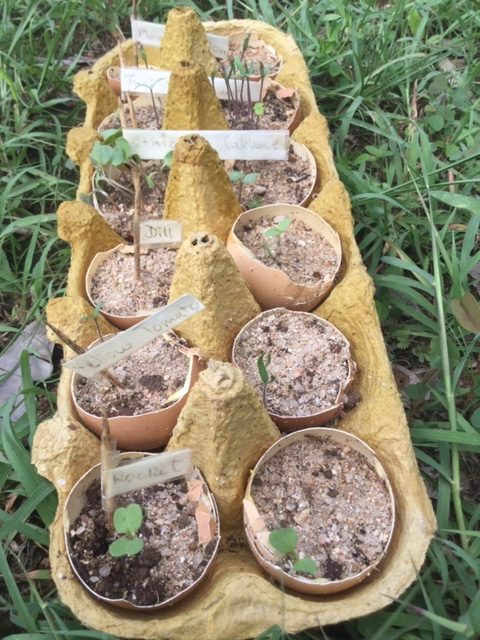
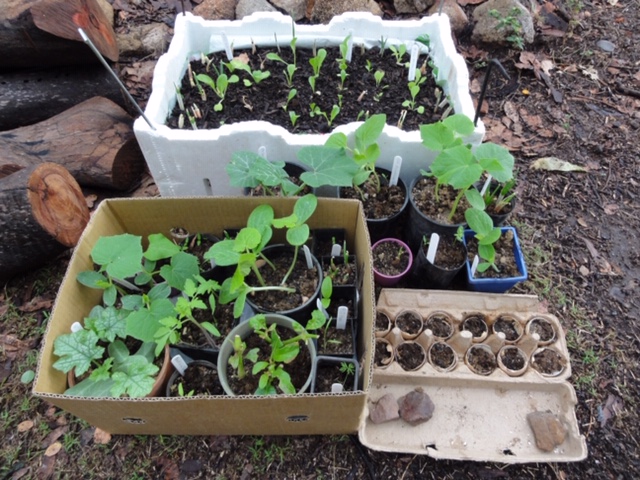
Ulla, yet another wonder-FULL piece of creative writing and this time, sharing all about a subject that is SO important for everyones future. Seed Saving and Gardening helps just about anyone to feel able……able to do something, at a time when things may seem a bit uncertain. Focusing on the positive benefits of seed saving and growing food bearing plants brings such a beneficial energy into ones life. It is exceptionally good for ones health and wellbeing. As Vandana Shiva says “Seed is not just the source of LIFE, it is the very foundation of our BEING” Thanks so much for detailing all the ins and outs of how this fantastic group of people come together.
Thank you Ulla for this wonderful piece of writing. I am in Ravenshoe and would luv to start a seed savers group up and have never done this before and this article will be very very helpful much appreciated